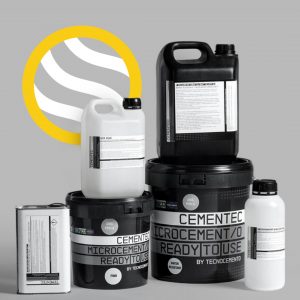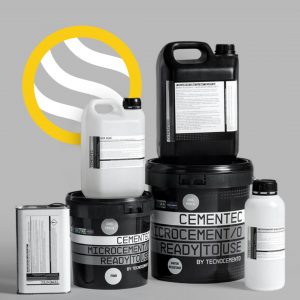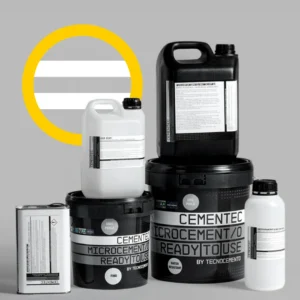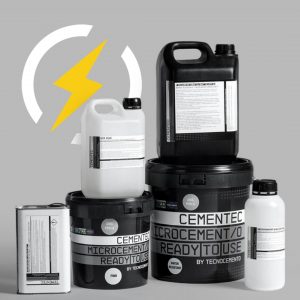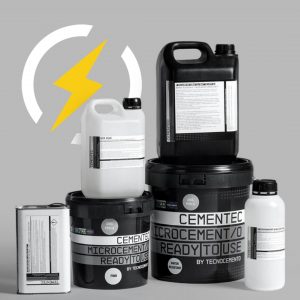Microcement ready-to-use cementec
Decorative coating for all surfaces: easy to apply, without building work or debris
What is the microcement?
Microcement ready-to-use Cementec is a continuous decorative coating, ideal for renovating surfaces without the need for complex building work. It adheres to a wide variety of materials, such as tiles, cement or plaster, which makes it a versatile option for the renovation of bathrooms, kitchens and interior or exterior spaces.
In addition, its smooth and polished finish allows for modern and personalised ambiences. Its resistance and durability make it perfect for homes, offices, shops and large surfaces. It is an innovative and avant-garde alternative that is gaining popularity in new construction projects and renovations for its ability to transform spaces with a unique and sophisticated design.
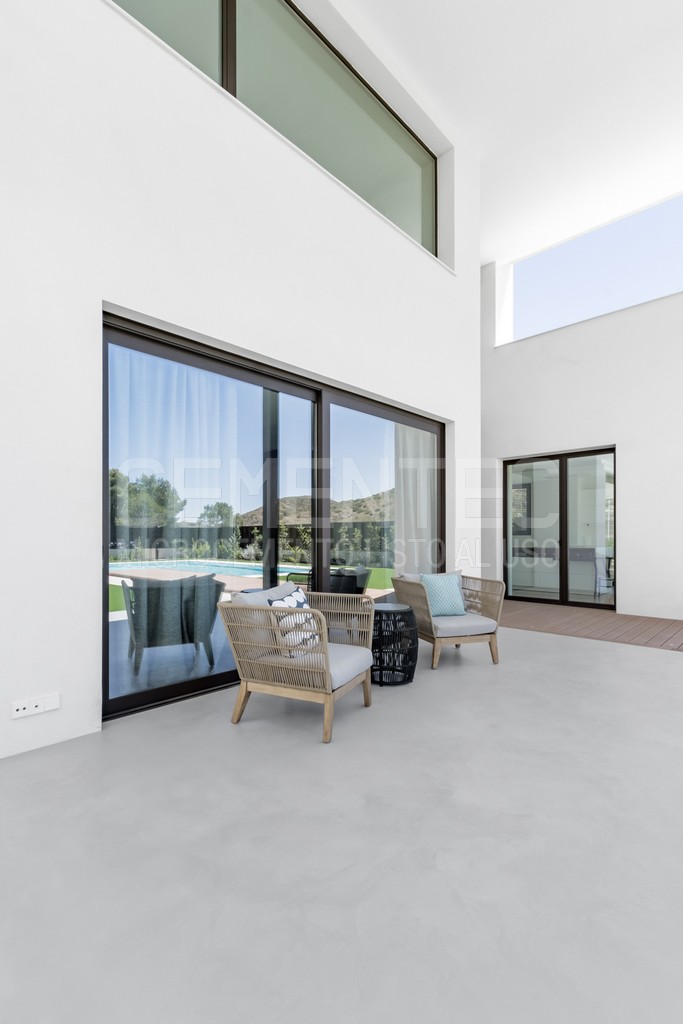
Why ready-to-use microcement?
- It’s ready to use.
- It’s easy: It comes weighed, measured and filled.
- It’s clean: It generates no airborne dust.
- It’s intuitive: No prior experience or classroom training is required.
- It’s safe: Product protected under strict quality control.
- It is complete: Variety of products and colours.
Where can microcement be applied?
Microcement is a highly versatile cladding that can be applied for both renovation and new construction projects, due to its ability to adhere to pre-existing materials without the need for demolition. It is frequently used in bathrooms, showers, kitchens and staircases due to its moisture resistance and durability.
It is also perfect for covering floors and walls in homes, furniture and commercial areas such as shops and restaurants, as well as in public spaces, thanks to its modern aesthetic finish and easy maintenance.
Types of surfaces where microcement can be applied
Microcement is a coating that can be applied to a wide range of surfaces, provided they are clean, dry and free of contaminants. Common substrates include: Smooth surfaces such as plasterboard and MDF (wood), as well as surfaces with joints such as tiles, terrazzo, stoneware and ceramics.
It is also ideal for application on cementitious substrates such as self-levelling mortars, concrete or cement renders. However, it is not recommended for application on wooden floors, plastics or metallic materials such as iron or aluminium, as these do not provide the necessary adhesion to guarantee a good result.
Microcement interiors
Cementec ready-to-use microcement is an ideal coating for interiors, thanks to its versatility, durability and avant-garde design. Its easy application and ability to combine with other materials make it perfect for various surfaces in the home.
Microcement on walls
Microcement offers an excellent decorative option for walls, providing a personal and unique touch. Its high technical and aesthetic quality makes it an attractive material for interiors.
Microcement stairs
Applying microcement on stairs creates visual continuity, eliminating the joints between steps and offering a feeling of spaciousness and dynamism in the spaces.
Microcement flooring
Microcement floors provide uniformity and can be used both indoors and outdoors. As it does not require the existing floor to be raised, it facilitates quick renovations and raises the floor level by only a few millimetres.
Microcement in bathrooms
Microcement is an excellent choice for bathrooms as it resists moisture and is easy to maintain. It can be applied on floors, walls, showers, bathtubs and countertops, offering a clean and modern finish.
Microcement in kitchens
In kitchens, microcement gives a feeling of spaciousness and cleanliness. Its stain-resistant finish makes it an ideal material for walls, floors and worktops, guaranteeing practicality and style.
Exterior microcement
Cementec ready-to-use microcement is a coating with water-repellent properties, suitable for coating those leisure areas where we need to feel calm and safe.
Microcement pools
Microcement is perfect for lining swimming pools, as it withstands high compression and climatic demands, providing an aesthetic and safe finish, even in areas that are in constant contact with water.
Microcement for exterior flooring
For outdoor flooring, microcement with anti-slip granules is an excellent option, especially in areas with water. In addition, there are solutions such as heavy-duty microcement, designed to withstand heavy traffic and adverse weather conditions.
Continuous and facades cladding with microcement
Microcement is also highly valued as a continuous coating for flooring and facades, providing a modern aesthetic and high durability. Its impermeability and resistance ensure a functional finish with great personality.
Types of microcement
Microcement colours
When you think of microcement, the classic grey colour usually comes to mind. However, this material offers a wide range of colours that adapts to any decorative style. From neutral tones such as greys, beige and creams, to more daring options with vintage and textured colours.
Microcement also allows you to customise the finish, choosing between smooth and homogeneous surfaces for a more minimalist style, or more marked textures for a distinctive touch. This versatility makes microcement a decorative option that adapts to both interiors and exteriors, offering a modern and personalised aesthetic.
Advantages of microcement
Microcement is a product full of advantages when used as a decorative coating:
- No expansion joints: Microcement does not need expansion joints, which prevents expansion or contraction problems due to changes in temperature or humidity.
- High resistance: Its composition with resins gives it great resistance to mechanical stress, perfectly withstanding daily use.
- Continuous surface: As it has no joints, microcement provides a uniform surface, which provides spaciousness and improves the brightness of spaces.
- Excellent adhesion: It adheres easily to a variety of surfaces, such as tiles, stoneware, concrete and cement, being suitable for use both indoors and outdoors.
- Ideal for quick renovations: No need to lift existing floors and no need for debris, making it an ideal choice for quick renovations.
- Easy application: It does not require heavy machinery for installation, which facilitates the application process.
- Easy maintenance: Microcement is easy to maintain and clean, which prolongs its durability.
- Minimal thickness: Its thickness of only 3 millimetres avoids major structural modifications, such as fitting doors.
Advantages of ready-to-use microcement
Ready-to-use microcement offers numerous advantages as a decorative coating, simplifying application and enhancing the user experience. Unlike other products, this microcement comes ready-mixed, eliminating the need to weigh, beat or mix components, which saves time in execution and cleaning.
- Easy and quick to apply: It comes in 5 and 12 kg kits, ready for immediate use, with no need for specialised courses, just online tutorials.
- Guaranteed precision: As it comes already mixed, errors in pigment weights and proportions are eliminated.
- Cleaner and more ecological: It avoids the generation of dust in suspension, making it more respectful with the environment.
- Water-repellent properties: Suitable for damp areas such as bathrooms and kitchens.
- Easy to store: Does not require large storage spaces and reduces stock.
- Variety of colours: Available in the most popular shades and with the possibility of customisation on request.
Problems with microcement
Microcement, like any material, has some drawbacks that can be solved with proper use and quality products such as those from Cementec. Here we explain the most common problems and their solutions:
- Application and drying time: Microcement can take between 4 days and a week to apply and dry, which can delay the work. However, with Cementec, the product is already prepared, which speeds up the process.
- Repairing damage: If the microcement is damaged, the entire surface normally needs to be repaired to even out the tone. However, with Cementec Ready to Use, it is possible to carry out localised repairs and effectively conceal the defect.
- Movement cracks: Cracks can appear if the supporting base moves. A high quality product such as Cementec and a correct application following our tutorials can avoid this problem.
- Waterproofing: In areas with humidity, the lack of waterproofing can affect the microcement. Cementec offers a water-repellent microcement that retains moisture, but it is recommended to use a waterproofing layer in areas with persistent moisture.
- Price: Although microcement may seem expensive, its high technological component and Cementec’s excellent value for money make it a long-term investment.
Frequent questions
What is microcement?
CEMENTEC allows you to achieve results with high creative value and amazing finishes, thanks to its capacity for customisation provided by its different products, and its wide range of colours and textures.
On what type of surfaces can it be applied?
Furthermore, for walls, the best surface for application is plasterboard or screed plaster.
Another advantage of microcement is avoiding the debris generated by the existing covering, facilitating and speeding up refurbishments, for example, in bathrooms, toilets or kitchens.
Is it applied directly or is previous adaptation carried out?
Practically no previous adaptation is required when the microcement is directly applied on plasterboard walls or perfectly cast screed plaster. Other rest of surfaces always require previous adaptation.
Our company offers different tutorial videos with exhaustive adaptation of surfaces, necessary to avoid any type of future problems. This previous adaptation is carried out using specific products for proper preparation.
For example, in the case of surfaces with joins, a previous adaptation with resins, fiberglass meshes and other products has to be carried out to block the appearance of the join in the covering applied.
Can Microcement be applied on parquet or wooden floors?
Microcement in sinks, bathtubs and wet areas – is microcement waterproof?
Microcement on underfloor heating: is it compatible?
Is it necessary to apply fiberglass mesh for microcement?
Can units be covered with microcement?
Does microcement need any type of maintenance?
Does microcement need joins?
Does microcement support high transit?
What is the difference between microcement and concrete?
First of all, the thickness of application, as concrete requires thicknesses greater than 2cm, and microcement approximately 2-3mm. The thickness of concrete can easily cause the appearance of cracks. Second, viability: microcement can be applied in many areas where concrete is totally unfeasible.
Finally, the aesthetics, as microcement is much more decorative than in concrete.
Do you have a range of colours?
In case of needing a different colour from our range, we can customise a different one for applications over 250m2.
